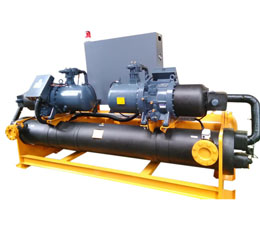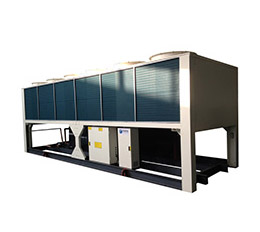- Home
- Products
- About Us
- News
- Project
- Video
- Soliutions/Oem/Custom
- Contact Us
Water chillers play an important role in many industries. They help keep medical machines running continuously and keep milk cool before it reaches the market. They assist the pharmaceutical industry, the brewing industry, and meat and poultry processing. If you are looking for a chiller for your business, one of the things you must decide is whether you need an air cooled chiller or a water cooled chiller. To assist you in your research, here are the differences between air cooled chillers and water cooled chillers.
Longer life - Water-cooled chillers usually do not need to be replaced as often as air-cooled chillers. They are not exposed to the outdoor elements such as rain, snow, ice and heat, which makes them less susceptible to damage.
Quiet operation - Air-cooled chillers produce noise from ducts and vents, while water-cooled chillers run quietly. The water flowing through the system does not produce the noisy expansion and contraction sounds heard in air-cooled chillers. Quiet operation is especially important in environments such as hospitals and schools, where noise can be disruptive to occupants.

Water Cooled Chiller
Energy efficiency - Water-cooled chillers have a film factor that is 10 to 100 times better than air-cooled chillers. This means that water-cooled chillers transfer heat more efficiently. For businesses, the result is savings in energy costs.
No open space required - Air-cooled chillers need to operate in an open space with plenty of fresh air outside. Water-cooled chillers stay inside the building, which makes them ideal for companies that don't have enough outdoor space.
Safety - Water-cooled chillers use water as the refrigerant rather than toxic chemicals. This makes them safer for those who come in contact with them.
Higher cost - Air-cooled chillers are cheaper than water-cooled chillers because they do not require components such as cooling towers and condenser pumps. However, many companies believe that the longer service life and energy cost savings make water-cooled chillers worth the initial high investment.
More maintenance - Because water-cooled chillers have more parts, they require more maintenance. Companies should be prepared to pay for regular inspections, water treatment to remove impurities, and periodic cleaning of the chiller machinery. More maintenance also means more chiller downtime. The more parts a machine has, the more things that can go wrong with the machine, which means that water-cooled chillers are more likely to need repairs than air-cooled chillers.

Air Cooled Chiller
Installation complexity - The extra parts in a water-cooled chiller also make installation more troublesome. This can mean higher labor costs to install a water-cooled chiller compared to an air-cooled chiller.
Need for a mechanical room - Companies need to have a mechanical room to install water-cooled chillers. This is to ensure that the chiller operates properly along with its cooling tower and additional components.
Not suitable for arid areas - Because they use a lot of water, water-cooled chillers are not great in areas where water is scarce. Companies paying for water can expect those bills to increase with the use of water-cooled chillers. Some arid areas also have restrictions on the use of water-cooled chillers.
Humidity is less efficient - Although water-cooled chillers are generally more efficient than air-cooled chillers, they operate less efficiently in humid environments. This is because humidity raises the wet bulb temperature, which indicates how efficiently water absorbs heat. Water-cooled chillers in humid environments may also make building occupants feel cold and damp.
Copyright © Water Cooled Chiller, Water Cooled Scroll Chiller Supplier China All Rights Reserved | Sitemap